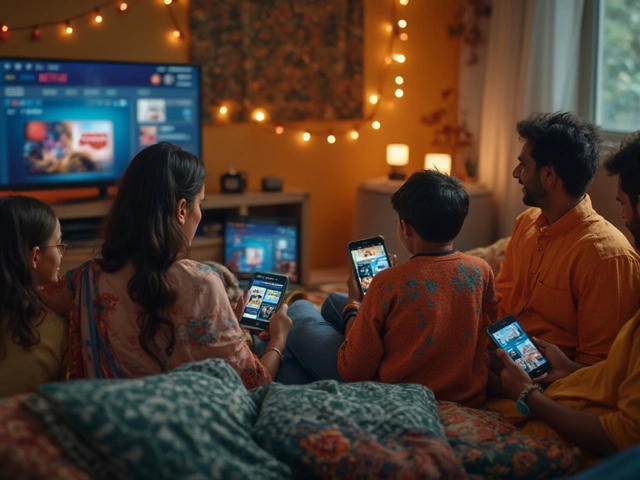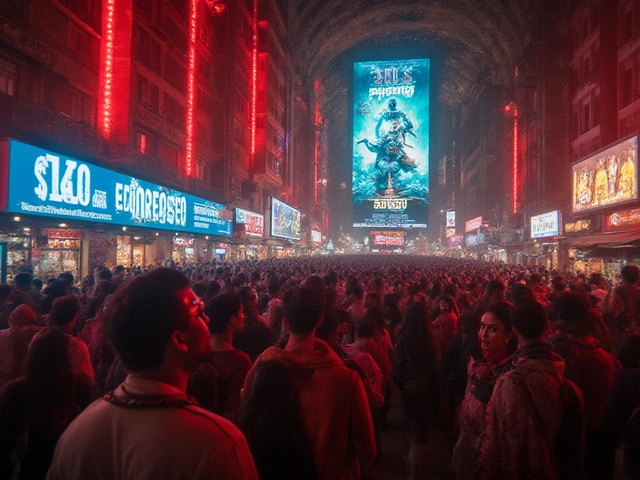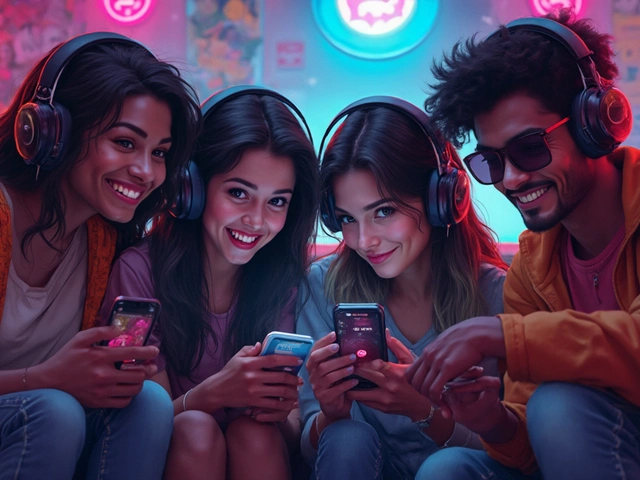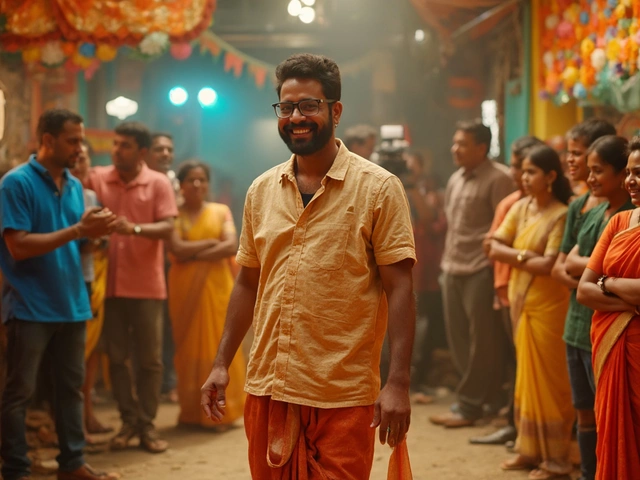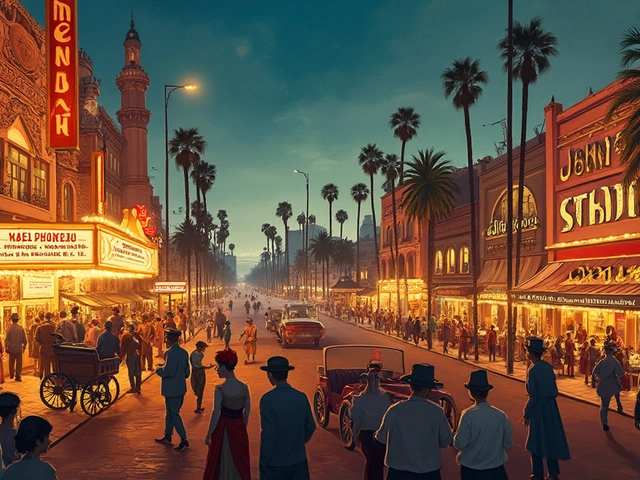Sholay – The Ultimate Bollywood Blockbuster
When you hear Sholay, the 1975 action‑adventure film directed by Ramesh Sippy that redefined Indian storytelling. Also known as the Indian western, it blends drama, comedy, and unforgettable music into a single, unforgettable experience. Fans still quote its dialogs, and the film’s silhouette appears on t‑shirts, posters and memes. Sholay isn’t just a movie; it’s a cultural touchstone that still powers conversations about Bollywood blockbusters.
One of the biggest reasons Sholay stays relevant is its link to Bollywood, the Hindi‑language film industry centered in Mumbai. Bollywood relies on star power, catchy songs and larger‑than‑life plots, all of which Sholay perfected. The movie set a new standard for production values, from the iconic desert set at Ramanagara to the legendary background score by R.D. Burman. Because of Sholay, later films knew that high‑budget visuals and a strong ensemble cast could push a movie into the stratosphere of box office hits.
Speaking of box office, Sholay also reshaped the box office, the measurement of a film’s commercial success through ticket sales and revenue. When it released, it shattered existing records and held the title of highest‑grossing Indian film for decades. The film’s success proved that a well‑crafted story could turn into a massive financial engine, encouraging producers to invest more in daring projects. That ripple effect is still visible in today’s blockbuster line‑ups, which chase the same record‑breaking momentum.
Sholay’s reputation as a cult classic, a film that maintains a passionate fan base long after its release, adds another layer to its legacy. Cult classics often spark endless debates, fan theories, and reinterpretations. Sholay’s characters – the heroic Jai, the righteous Veeru, the ruthless Gabbar Singh – have become archetypes in Indian pop culture. Even new directors reference these roles when they want to tap into that timeless appeal. The film’s dialogues, like “Kitne aadmi the?” have become shorthand for dramatic tension, echoing through advertising, stand‑up comedy, and social media memes.
Why Sholay Still Matters in Modern Indian Cinema
At its core, Sholay brings together three essential ingredients of Indian cinema: a gripping narrative, memorable music, and larger‑than‑life characters. The narrative structure – a chase, a showdown, and a bittersweet resolution – is a template found in many recent hits listed on this page, from action‑packed blockbusters to character‑driven dramas. The music, with songs like “Yeh Dosti” and “Mehbooba Mehbooba,” shows how a soundtrack can become a marketing machine, driving repeat viewings and boosting box office numbers. And the characters prove that iconic roles can become cultural landmarks, influencing casting choices and promotional strategies across the industry.
Another semantic link is that Sholay requires strong ensemble performance to achieve its impact. The film’s success depended on the chemistry between Dharmendra, Amitabh Bachchan, Hema Malini and Amjad Khan. That lesson echoes in today’s top‑grossing releases, where producers deliberately assemble star‑studded casts to attract diverse audience segments. In other words, Sholay teaches that a balanced mix of talent, at times even with contrasting personas, can create a magnetic pull for viewers.
Sholay also encompasses the idea of a cinematic “world” that fans can revisit. The film’s setting, costumes, and dialogues have spawned fan conventions, tribute performances, and even themed tours of its shooting locations. This world‑building approach is mirrored in modern franchises that generate ancillary revenue through merchandise, games, and spin‑off series. The concept of a self‑contained universe that lives beyond the screen is a direct inheritance from Sholay’s enduring fandom.
From a business perspective, Sholay influences how distributors plan releases. Its record‑breaking premiere showed the power of wide‑scale, coordinated launches across theaters, a strategy now standard for big‑budget releases. The film’s repeat‑screenings during festivals and holidays demonstrated that timing a release with cultural events can multiply earnings—a tactic still used for summer blockbusters and holiday specials highlighted in the article collection below.
Finally, Sholay bridges the gap between classic cinema and contemporary trends. While its storytelling feels timeless, the film also embraced then‑new technologies like stereophonic sound and widescreen framing. Modern filmmakers see Sholay as a blueprint for marrying traditional narratives with cutting‑edge tech, whether it’s CGI‑heavy action or immersive 3‑D experiences. This bridging role is evident in the 2025 blockbusters discussed later, where directors cite Sholay’s balance of heart and spectacle as inspiration.
All these connections – from box office dynamics to cult status, from ensemble casts to world‑building – make Sholay a perfect lens through which to view the diverse set of articles you’ll find below. Whether you’re curious about the biggest hits of 2025, the myths around flop‑free actors, or the longest Indian movies ever made, each piece circles back to the lessons Sholay taught the industry. Dive in and see how this legendary film still shapes the conversation around Indian cinema today.
Most Iconic Indian Movie: Exploring the Classic That Shaped Cinema
Everyone has an opinion about which Indian movie stands on top, but one classic keeps coming up again and again. This article gets into what makes a movie truly iconic in India, with a deep dive into the movie that keeps making the lists. You'll find stories from behind the scenes, how the film grabbed the country’s imagination, and what keeps it fresh for each new generation. Plus, there are tips for watching and appreciating classic Indian films even when newer blockbusters keep grabbing attention. If you’re curious about why one film stands out after all these years, you’re in the right place.
